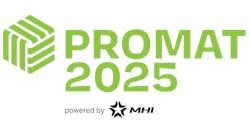It is clear that many pre-requisites are not yet in place for IoT to be widely deployed, according to Peter Harrop, chairman of IDTech Ex.
Based on his company’s new study, “Internet of Things 2017-2027,” Harrop says that the hype surrounding IoT will “dissipate and considerable deployment will occur but not at the scale and speed that most predict and only if security issues are solved.”
Looking at some of the solutions to the security issue, the study reports that the most prolific electronic device is the anti-theft tag known as electronic article surveillance (EAS). This is because it is disposable and big retailers and libraries in some countries feel that it deters thieves. Over ten billion are produced yearly, mostly sold at around one cent with 0.5-cent ones available. There are three standards impeding sales because tags have to be replaced and often produce is defaced in that process when goods are rerouted to a different retailer.
Next comes disposable RFID tags which help stock control at around eight cents apiece. There is one standard portfolio for the highest volume applications. Both EAS and highest volume RFID took at least 20 years to get there.
Then comes mobile phones which are not disposable but they are mostly replaced within two years. RFID and mobile phones sell in billions yearly. EAS, RFID and mobile phones are not hard wired so there are no delays and costs from that but they all need infrastructure, in the case of mobile phones, widely deployed infrastructure. The EAS and RFID systems are usually operationally closed systems - only one service provider accesses them so their security is not a serious issue even though RFID often has internet backhaul. The phones are on more open systems and they are largely insecure but that has not impeded sales because the consumer benefits are so compelling.
Looking at the pricing structure, Harrop points out that the Internet of Things nodes constitute IP addressed things that collaborate with things using the internet. The nodes that are operationally suitable for widespread deployment are tens of dollars each though they can be one or two dollars if improved and sold in very high volume.
“If they are to be sold in tens of billions yearly they need to be ultra-low power and disposable, fit-and-forget,” Harrop says. “Indeed they will probably be self-fit as with dropping them from a helicopter onto forests for forest fire monitoring, snow for avalanche monitoring or tracking oil slicks at sea.” He suggests that onee standard with interoperability would be ideal as self-organizing, self-healing wireless sensor networks (WSN) have not proved to be sufficiently scalable due to power consumption and short range so star extensions to the internet like LoRaWAN and other options are to the fore this year.
Governments are spending billions of dollars to solve the software and systems challenges primarily, not yet to install any high volume actual systems. For example, the UK Government's latest $38 million investment in IoT will focus on enabling the UK’s businesses and public sector to make advances in creating their IoT capability, specifically in areas such as security and trust, data interoperability, investment justification and design development. “Correctly the major emphasis is on systems and software not nodes,” says Harrop.
Nodes may need to be under one dollar but, as with EAS and high volume RFID, the Chinese show every sign of achieving their usual formidable cost reduction. Like EAS and RFID, IoT is not a consumer item. Above all, retailers and their suppliers collaborate to create the primary demand for EAS and highest volume RFID and the consumer does not see an obvious benefit. In the early years, EAS and RFID were forecasted to be sold in tens of billions to trillions and when progress was slow, forecasters drew ever steeper slopes to predict the same end result. That was until reality dawned. That bubble pushing is happening with IoT today despite lackluster sales.
Indeed, no enduringly profitable application with very high volume has yet been proven. Nonetheless, IDTechEx sees a $20 billion market in 2020, with little of that being the nodes.



